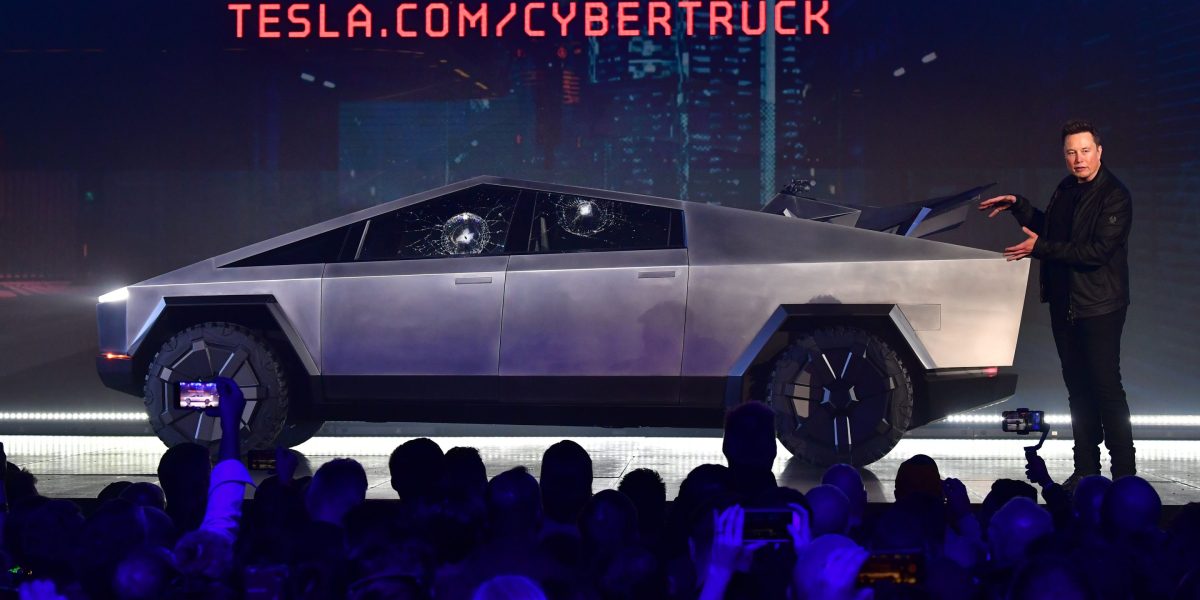- Tesla’s new rear-wheel-drive Cybertruck with only one motor costs $10,000 less but offers poor value for money, argue fans, who say buyers are better off with its dual motor, all-wheel-drive sibling.
Customers waiting to get behind the wheel of a more affordable Cybertruck have, at long last, an entry-level option courtesy of CEO Elon Musk.
But they may be in for a sticker shock—all told, Tesla shaved only $10,000 off the price of the new rear-wheel-drive pickup while simultaneously stripping away a number of features prized by truck buyers.
Although it comes with a slight increase in range, overall critical reception was muted at best, given that this third version rounds out the range, which was considered the final chance to reignite interest in what threatens to become a historic flop.
With eight recalls in just about 15 months of production, the stiff price and perceived poor value for money make it the latest bitter disappointment for a once highly anticipated model that initially seemed poised to become Musk’s next breakout hit.
“We expect little if any incremental volume will be added to [Wall Street] Tesla delivery estimates as a result of the CT RWD addition,” wrote Gary Black, Tesla investor and managing partner of The Future Fund.
What features have been shaved off the new Cybertruck?
Originally slated to start at $39,990 when it was first unveiled in late 2019 — just shy of $50,000 in today’s dollars — the new single motor Cybertruck expected to arrive as early as June weighs in at a chunky $69,990 before any U.S. federal tax credits.
In addition to losing the second motor driving the front axle, buyers can also say goodbye to air suspension, a previously standard feature that lifts up the chassis and helps when driving offroad.
In its place are adaptive coil dampers that do not offer the same high ground clearance combined with a lower towing capability.
It also swaps out the premium vegan leather seats with ventilation for cheaper cloth and eliminates the rear console display for backseat passengers.
The motorized hardtop tonneau, which extends from the top of the cab to cover the flatbed at the push of a button, is gone in favor of a soft material that unrolls by hand for a cool $750 added price.
Even the 240-volt power outlet in the bed that makes it attractive to craftsmen has been removed.
The RWD Cybertruck does come with a longer 350-mile range, but those 25 added miles it gains are effectively a result of its smaller 18-inch rims.
If you upgrade to the 20-inch for an extra $3,500, the range drops back to 331 miles, only six more than the AWD version.
Cybertruck sales could already drop in 2025
With all this content stripped out, even Tesla fans are choking on the price.
Instead of appealing to cost-conscious customers who couldn’t afford the more expensive dual motor or tri-motor, most believe the new single-motor version is designed to intentionally push them into upgrading.
“The AWD trim for $10k more is absolutely worth the extra cost compared to the new Cybertruck,” argued Sawyer Merritt, one of the leading members of the online Tesla community.
Musk installed enough annual capacity in his Texas plant to build 125,000 Cybertrucks per year, with plans to eventually double that to 250,000 to meet what he claimed to be off the charts demand.
Since deliveries began in late 2023, only about 46,000 have been sold. A number of analysts previously suggested that the million customers who had put down a deposit for one may have just been waiting for the low-cost entry version unveiled on Thursday. If so, they’re in for a rude awakening. Black estimates Cybertruck volumes will drop to just 20,000 trucks in 2025, in only its second full year of production.
What this means for profits is unclear.
Tesla did say that the truck had achieved a positive gross margin in the third quarter of last year, but retail analyst “Troy Teslike” who tracks production volumes ascribed this to a temporary effect stemming from an unusually large number of high priced models delivered in that period.
Tesla did not respond to a request from Fortune for comment.
This story was originally featured on Fortune.com
Source link


 Entertainment8 years ago
Entertainment8 years ago
 Politics8 years ago
Politics8 years ago
 Entertainment8 years ago
Entertainment8 years ago
 Entertainment8 years ago
Entertainment8 years ago
 Tech8 years ago
Tech8 years ago
 Tech8 years ago
Tech8 years ago
 Tech8 years ago
Tech8 years ago
 Politics8 years ago
Politics8 years ago






